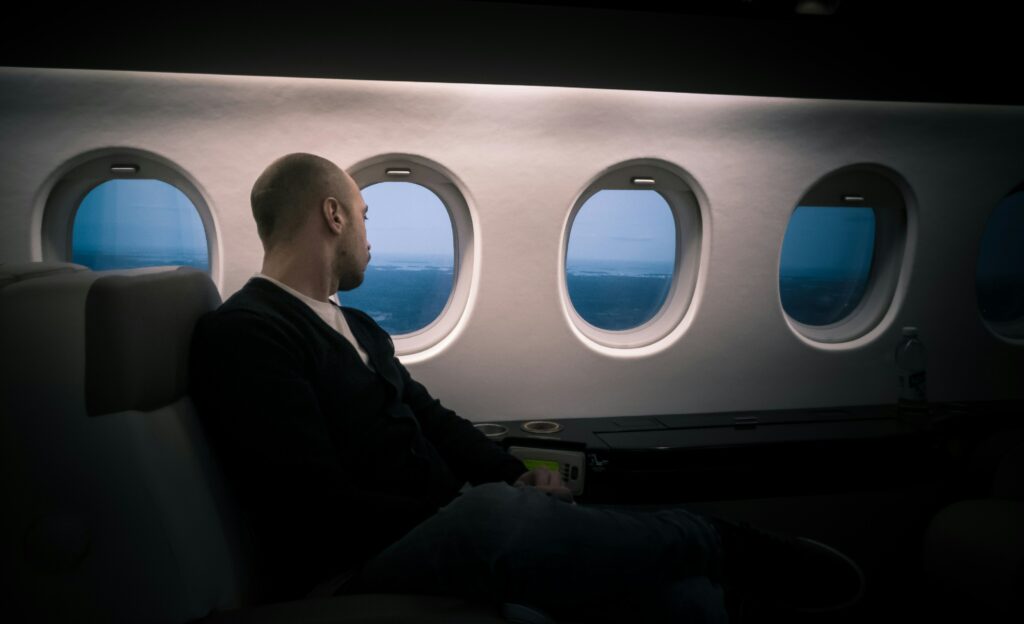
In January 1914, the world’s first scheduled commercial passenger flight took off, travelling from St. Petersburg to Tampa, Florida. Despite transporting just a single passenger, this historic journey springboarded an entire future of air travel.
Though technology, logistics, and infrastructure all underwent significant evolution in the following decades, airlines today are still having to manage some of the most fundamental concerns, navigating a landscape shaped by shifting passenger expectations, regulatory requirements, and economic pressures.
When creating their newest cabins, airlines are having to grapple with a myriad of conflicting priorities to effectively cater to the needs and preferences of their extensive base of stakeholders, from passengers and employees to shareholders and regulatory bodies. One of the most prevalent challenges is the balancing act between maximising space efficiency within an aircraft while maintaining a sense of luxury, quality, and comfort.
The space efficiency–passenger experience paradox
Since the conception of the commercial aircraft, designers have been looking to maximise space and reduce weight onboard, in order to save fuel costs, optimise seating, and create a pleasant and functional inflight environment for both passengers and airline staff.
Though advances in technology and infrastructure have helped to manage certain elements, the fundamental question remains the same. How can airlines find the perfect balance between maximising space efficiency and optimising the passenger experience?
Considering sustainability
This balancing act was made even more complex when airlines began to consider how sustainability would fit into the mix. Nico den Ouden, Chief Technology Officer and General Manager of Seating at Gen Phoenix explains, “In our experience, there is a balancing act that airlines are trying to achieve between providing passengers with the ultimate onboard experience in terms of quality, comfort and design, reducing overall cabin weight, as well as reducing waste and working towards meeting aggressive net zero-emissions targets.”
Den Ouden explains that although industry progress has been gradual, “We expect this to start accelerating as the industry receives increasing pressure from eco-conscious travellers who are increasingly choosing airline brands that are prioritising sustainability across the entire flying experience.”
To significantly reduce emissions, one of the biggest changes the industry has witnessed is airlines increasingly making the switch to narrow-body (NB) aircraft. Though they have traditionally been used for short-haul flights, advances in technology are making these aircraft viable for medium and even long-haul journeys.
Despite the benefits that NB aircraft offer from a sustainability perspective, naturally, they create new and distinct challenges for airlines and cabin designers. Unlike a wide-body aircraft – which traditionally boasts a twin-aisle, with passengers seated seven to ten abreast – a NB aircraft will have only one aisle and between two to six seats per row.
When you consider all the additional passenger luggage, food and drink, amenities, health and safety items, and medical supplies needed onboard a long-haul flight – compared to that of a shorter journey – it puts into perspective some of the difficulties associated with using a NB aircraft. Not to mention, airlines must achieve this all while upholding a sense of quality and luxury.
With some clever planning, these challenges are able to be addressed using new technologies, innovative products, and logistical, space-saving methods and solutions.
A reimagined approach
Solving the puzzle of maximising both space efficiency and passenger experience – while also taking sustainability into account – requires the adoption of a fresh mindset, in order to curate the cabin of the future.
Gary Doy, Founder and Managing Director at Doy Designs explains, “Ultimately airlines need to maximise the revenue generated from a given space to achieve their business potential. We can optimise the space available by blending functionality and passenger environments in clever and sometimes unexpected ways. Borrowing space from one area and adding it to another where it has greater value is one philosophy we use when designing passenger environments.”
Doy also highlights the importance of questioning features that have become common practice over the years, suggesting that when reevaluated, they “may offer opportunities to change the travel experience for the better.”
Doy elaborates, “One example is the removal of the tray table on the DOY Design Ultra Slim Economy Seat which allows us to provide greater passenger space for short-haul trips and questions the need for a full galley on the aircraft. This opens the opportunity to use the space for a full size Passengers with Reduced Mobility (PRM) lavatory that would arguably improve the facilities experience for all passengers.”
Elements such as tray tables on aircraft are so ingrained in the minds of both passengers and airline staff that it could be challenging to reconsider their necessity. However, embracing these against-the-grain ideas, and challenging the traditional norms could well lead to transformative outcomes for overall passenger experience.
To understand what should be prioritised in the cabin of the future, airlines are looking to their stakeholders. For Lee Clark, Senior VP of Strategy at Rosen Aviation, “Clever and efficient design comes down to understanding the needs of all stakeholders and their constraints.” He explains, “Ultimately, we rely on innovation to create novel and new solutions by addressing specific pain points without losing sight of the driving factor – the passenger experience.”
Leveraging technologies
Beyond space-saving strategies, technology can play a pivotal role in transforming the passenger experience, enhancing not only comfort but engagement.
A great example of this is the world-renowned Emirates digital side windows. Clark explains, “Rosen Aviation was the very first supplier to provide digital side-windows to Emirates, in partnership with WASP and Collins Aerospace that designed and built the Emirates first-class Game Changer suite. The initial feedback was so overwhelmingly positive that we’ve now heard customers are actively seeking the middle seats that contain digital windows in preference to traditional outside “window” seats. A key driver of increased bookings is the vastly superior night flying experience offered by digital windows, where the starry night sky is much more vibrant and visible without ambient light and reflections found on traditional windows.”
This is a fantastic example of how innovative inflight technology can practically transform the flying experience for passengers. Additionally, as such technologies develop and become more mainstream, they are primed to revolutionise the way passengers perceive and enjoy flying, marking potentially significant milestones in the evolution of air travel.
Moving forward
When envisioning the cabin of the future, it’s clear that the industry is at a pivotal moment where the convergence of space, luxury, and sustainability is reshaping the very essence of air travel. While the challenges faced by airlines in balancing these elements are certainly prominent, they also present opportunities for innovation and reimagining what air travel can be.
By embracing fresh perspectives, implementing advanced technologies, and actively involving stakeholders in the design process, airlines can navigate these challenges and create cabins that exceed expectations. From rethinking traditional features to embracing cutting-edge solutions, the cabin of tomorrow promises a more enjoyable, sustainable, and transformative flying experience for passengers across the globe.


